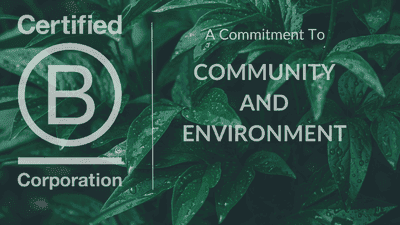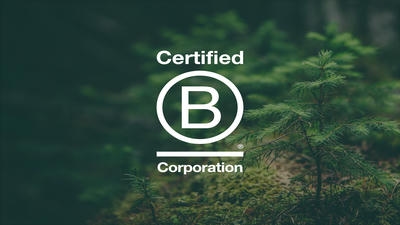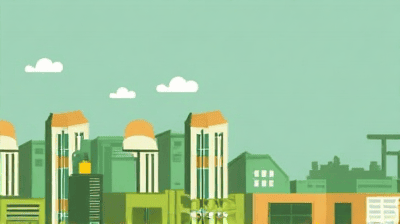
As awareness of environmental issues and social justice grows, businesses are increasingly scrutinized not only for their financial performance but also for their social and environmental impacts. Amid this shift, a new breed of company has emerged: Certified B Corporations, or B Corps. These companies are redefining what it means to do business by balancing profit with purpose. With their commitment to high social and environmental performance, accountability, and transparency, B Corps are positioning themselves as leaders in the sustainability revolution.
A B Corporation, or Benefit Corporation, is a for-profit corporation that is legally obligated to pursue a positive impact on society and the environment, in addition to generating profits. B Corps meet comprehensive social and environmental performance standards established by the non-profit B Lab, which manages the certification process for companies seeking B Corp status.
Unlike traditional corporations that primarily focus on maximizing shareholder value, B Corps operate under a dual mission: to create value for stakeholders, which include employees, customers, suppliers, and communities, while also being accountable to shareholders. This commitment to broader accountability is reflected in their legal structure and business practices.
The B Corp certification process involves a rigorous assessment of a company’s social and environmental performance through the B Impact Assessment. This assessment evaluates various practices in areas such as:
Governance: Assessing the transparency and accountability of the company's governance structures and practices.
Workers: Evaluating employee treatment, compensation, benefits, and workplace culture.
Community: Analyzing the company's impact on local communities, including sourcing practices and community engagement.
Environment: Reviewing environmental practices, waste management, energy consumption, and sustainability initiatives.
Customers: Assessing how products and services benefit customers and promote social or environmental good.
To achieve B Corp certification, companies must score a minimum of 80 out of 200 points on the assessment and provide documentation to verify their claims. Post-certification, B Corps must recertify every three years to maintain their status.

The B Corps movement began in 2006 when a small group of businesses and organizations united under the vision of using business as a force for good. Since then, the B Corp community has experienced remarkable growth, with thousands of companies around the world choosing to pursue certification.
As of 2023, there are over 5,000 certified B Corps in more than 80 countries across various industries, including food and beverage, fashion, technology, and consulting. This diversity illustrates the versatility of the B Corp model and its ability to resonate with businesses of all sizes, from startups to multinational corporations.
The rise of B Corps coincides with a generational shift in consumer behavior. Millennials and Gen Z, who prioritize ethical consumption, are driving demand for businesses that align with their values. These younger consumers are more likely to support companies with social and environmental commitments, compelling businesses to adopt sustainable practices or risk losing market share.
Investors are also increasingly considering environmental, social, and governance (ESG) factors in their decision-making processes. B Corps attract socially responsible investors who seek to align their portfolios with values-driven companies. This trend is leading to a growing recognition that sustainability and profitability are not mutually exclusive.
B Corps are setting a new standard for business practices by exemplifying how companies can successfully integrate social and environmental considerations into their operations. Their commitment to transparency and accountability is inspiring other businesses to adopt similar practices, creating a ripple effect in the corporate world.
By prioritizing sustainability and social responsibility, B Corps are driving innovation across various sectors. These companies often develop new products, services, and business models that address pressing social and environmental challenges. For example, B Corps in the renewable energy sector continuously seek innovative solutions to reduce carbon emissions and enhance energy efficiency.
B Corps are influencing the broader corporate responsibility landscape by advocating for policies that support social and environmental well-being. Many certified B Corps engage in advocacy efforts, promoting legislation that aligns with their sustainability objectives and encouraging other businesses to follow suit.
The B Corp community fosters collaboration among like-minded companies, enabling them to share best practices and resources. This collaborative environment encourages B Corps to learn from one another and collectively address shared challenges, amplifying their impact on sustainability.

While B Corps have made significant strides, they face unique challenges, particularly in balancing profit generation with their social and environmental goals. This dual focus can create tensions, especially when financial pressures conflict with sustainability objectives. B Corps must navigate these complexities while ensuring that their impact commitments remain intact.
As the popularity of B Corps grows, competition among certified businesses increases. This competition can lead to concerns about differentiating products and services in a crowded marketplace. B Corps must continually innovate and communicate their unique value propositions to stand out to conscious consumers.
Measuring social and environmental impact can be challenging, particularly when it comes to quantifying improvements and outcomes. B Corps must develop robust metrics and reporting systems to track their progress and effectively communicate their achievements to stakeholders.
B Corps have a wide range of stakeholders, including customers, employees, investors, and communities. Meeting the diverse expectations of these groups can be complex, requiring B Corps to balance varying priorities and interests while remaining true to their mission.
Patagonia is renowned for its commitment to environmental sustainability and social responsibility. The outdoor apparel company uses recycled materials in its products, promotes fair labor practices, and donates a percentage of its sales to environmental causes. Patagonia exemplifies how a B Corp can successfully integrate sustainability into its core business model while maintaining strong profitability.
As a B Corp, Ben & Jerry’s is committed to social activism and environmental stewardship. The ice cream company focuses on sourcing Fairtrade-certified ingredients, advocating for climate justice, and supporting local communities. By tying its brand to social issues, Ben & Jerry’s has built a loyal customer base that appreciates its authenticity and values.
Allbirds is an innovative footwear company that prioritizes sustainability throughout its operations. The company uses natural materials, such as merino wool and eucalyptus trees, to create eco-friendly shoes. Allbirds’ focus on transparency and sustainability has garnered attention and recognition in the fashion industry, setting a new precedent for environmentally conscious manufacturing.
Eileen Fisher, a pioneer in sustainable fashion, has embraced the B Corp model to advance its commitment to social and environmental responsibility. The company emphasizes ethical sourcing, fair labor practices, and circular fashion through initiatives like their take-back program for used garments. Eileen Fisher’s success showcases how B Corps can thrive while championing sustainability.

To foster the growth of B Corps and support their contributions to sustainability, governments can implement policies and incentives that promote social enterprise and responsible business practices. This could include tax incentives, grants, and funding opportunities for B Corps that prioritize sustainability.
Raising awareness of B Corps among consumers and businesses is essential for the movement to thrive. Governments and organizations can collaborate to educate stakeholders about the benefits of B Corps and the importance of supporting companies that prioritize social and environmental impact.
Policymakers can integrate B Corps into broader sustainable development strategies and align their objectives with the United Nations Sustainable Development Goals (SDGs). By recognizing B Corps as valuable partners in achieving sustainability objectives, governments can amplify the impact of certified businesses.
As the demand for responsible business practices increases, the number of certified B Corps is expected to grow. More companies will seek certification as they recognize the value of aligning their business models with social and environmental goals. This growth will further diversify the B Corps landscape, leading to greater innovation and collaboration.
The principles of B Corps are likely to be integrated into the core strategies of traditional corporations as well. Companies may adopt B Corp-like practices without pursuing certification, as they recognize the importance of sustainability in meeting consumer expectations and enhancing their brand image.
B Corps represent a shift toward stakeholder capitalism, where businesses prioritize the interests of a broader range of stakeholders. This movement is gaining traction, and as more companies embrace stakeholder-centric practices, the principles underlying the B Corps model may become mainstream.
Demand for accountability and transparency in business practices will continue to rise. B Corps, with their commitment to transparency and social responsibility, will lead the way, inspiring others to adopt similar practices while increasing pressure on companies that engage in greenwashing.
The rise of B Corporations represents a significant shift in the business landscape, as companies increasingly recognize the importance of balancing profit with purpose. B Corps are leading the sustainability revolution by setting a new standard for corporate responsibility, fostering innovation, and driving positive change in society and the environment.
While challenges remain, the potential for B Corps to shape a more sustainable future is immense. By supporting and celebrating these certified businesses, consumers can play an active role in advancing the mission of B Corps and promoting a more equitable, sustainable, and just economy. As we look to the future, the question is not whether B Corps can lead the sustainability revolution, but how far they can take us toward a more sustainable world.